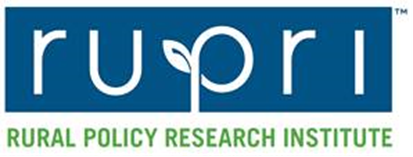Penn State Project aimed at strengthening communities in the wake of the coronavirus pandemic

The coronavirus pandemic has revealed the vulnerability of social and economic upheaval. But what factors make certain communities especially vulnerable during this and future crises? And how can policymakers and community groups understand and mitigate these vulnerabilities, while helping communities emerge from such adversity stronger than before?
Researchers in the Center for Economic and Community Development in Penn State’s College of Agricultural Sciences, in partnership with Penn State Extension‘s Energy, Business, and Community Vitality Unit, have developed an online tool they hope will facilitate engagement and help community leaders formulate answers to these and other questions.
“Vulnerable Pennsylvanians in the Context of a Pandemic” is a project based on the ArcGIS StoryMap platform. Using data from the U.S. Census Bureau and U.S. Department of Agriculture, the site enables the user to click on interactive maps to learn about the prevalence of 12 vulnerability risk factors at the county and, in many cases, census-tract level. Accompanying the maps are narrative text and several questions designed to stimulate thought and discussion.
“As we were thinking about meaningful research we could do to help communities and decision-makers in this pandemic, we thought about vulnerable populations in Pennsylvania,” said Cristy Halerz Schmidt, applied research educator in the Center for Economic and Community Development. “We wanted to identify some of the social and economic factors that could make people more vulnerable to risk, and how these factors might affect their ability to recover from unexpected events.”
The result was a series of interactive maps with data related to conditions that existed before the COVID-19 pandemic. The maps illustrate — and allow users to drill down on — the following vulnerability risk factors: poverty, housing-cost burden, broadband and internet access, race and ethnicity, school enrollment, healthcare coverage, language barriers, disability status, food insecurity, population 65 and over, transportation, and sources of income.
Based on these factors, the researchers developed information and discussion questions to guide thinking about how, why and where the pandemic and resulting disruptions could affect local populations.
“We hope the discussion questions can help community members better understand their neighborhoods or counties as they seek solutions or plan for impacts,” said Schmidt, who pointed out that many of the vulnerability risk factors incorporated in the tool have been the subject of local and national discussion and news coverage as the pandemic’s impact became more clear.
The narratives and questions can serve as a facilitation tool, noted Alyssa Gurklis, program and project coordinator in the Center for Economic and Community Development. “For example, community leaders can use the maps and text to guide discussion and help people sift through the information,” she said.
“As the pandemic progresses, the maps can be useful in assessing the specific needs of a community and provide a basis for evaluating whether policies and programs are working or whether there needs to be a different approach to issues,” Gurklis added. “This resource can assist decision-makers in navigating those questions.”
Although the project grew out of the coronavirus pandemic, it has a longer-range value, according to Theodore Alter, professor of agricultural, environmental and regional economics and co-director of the Center for Economic and Community Development.
“The pandemic obviously is having really serious impacts across our communities,” Alter said. “Folks are suffering, and there’s going to be a shortfall in revenue that’s going to impact public services. But as citizens, as members of civic and nonprofit organizations, as members of the public and private sectors, we can use this as an opportunity to think about not only what we need to do now to help move families through this crisis, but also to think about what we want our communities to be like in the future.”
The discussion that the StoryMap tool can help stimulate, he explained, may lead to approaches to address chronic issues affecting communities, leaving them more prepared to face future challenges.
“Civil dialogue around our differences and vulnerabilities provides the greatest opportunity for co-creativity and co-innovation,” Alter said. “If I were an extension educator, a community leader, a business owner, a municipal official, a pastor, a head of a mental health organization, I would use this vulnerabilities StoryMap to look in-depth at my community, and then bring people together to talk about the questions we posed and others — use it as a catalyst for figuring out how we want to go forward.
“The conversation should be about more than just how we can mitigate the vulnerabilities, but also how we actually can get stronger in the face of this pandemic so that in the future, we’re better prepared for the next crisis that comes along,” he said. “How can we improve and strengthen what we do and how we do it? It’s not about returning to equilibrium, but about getting stronger, getting better, getting different, because the world is going to be different.”




